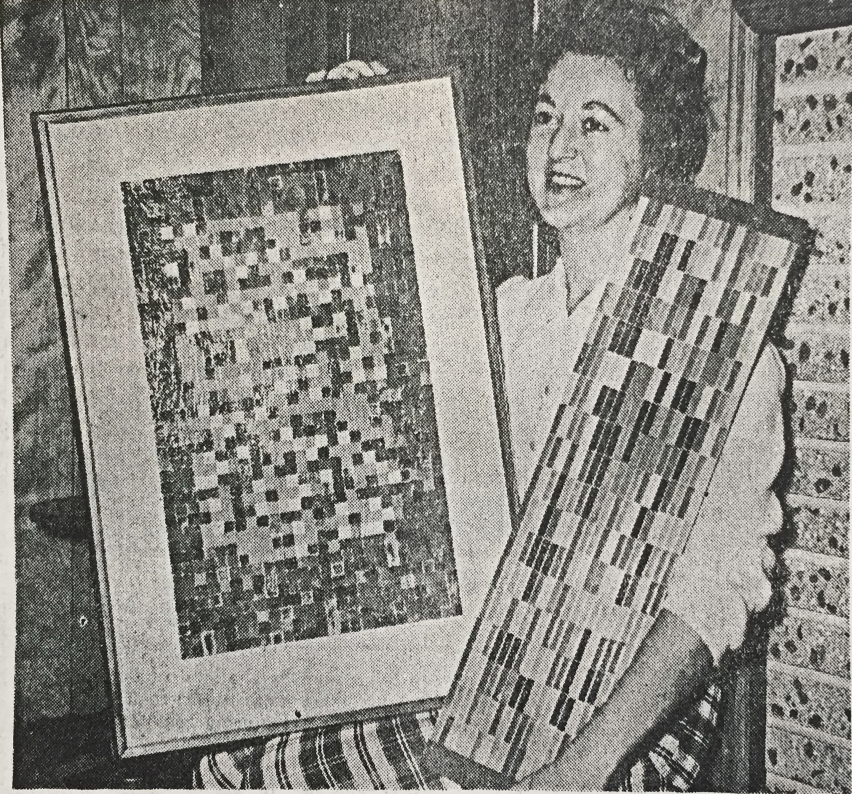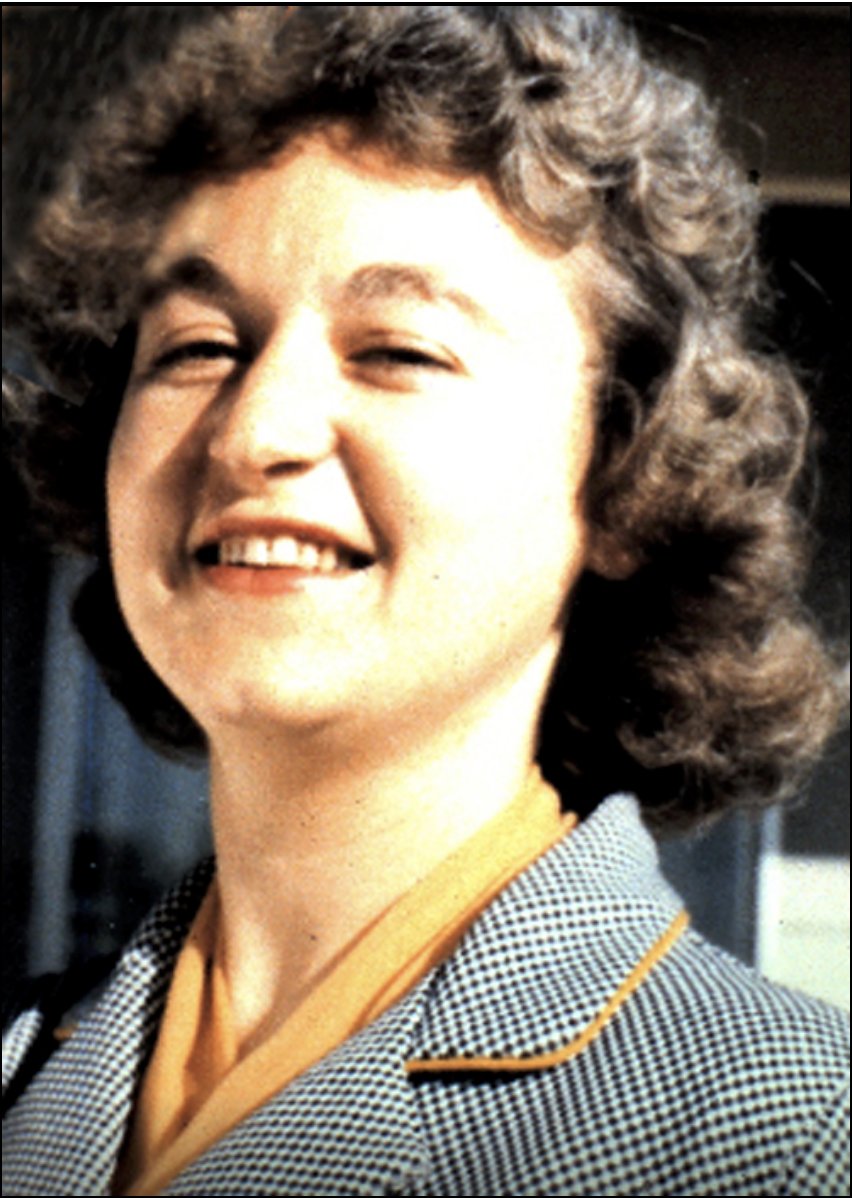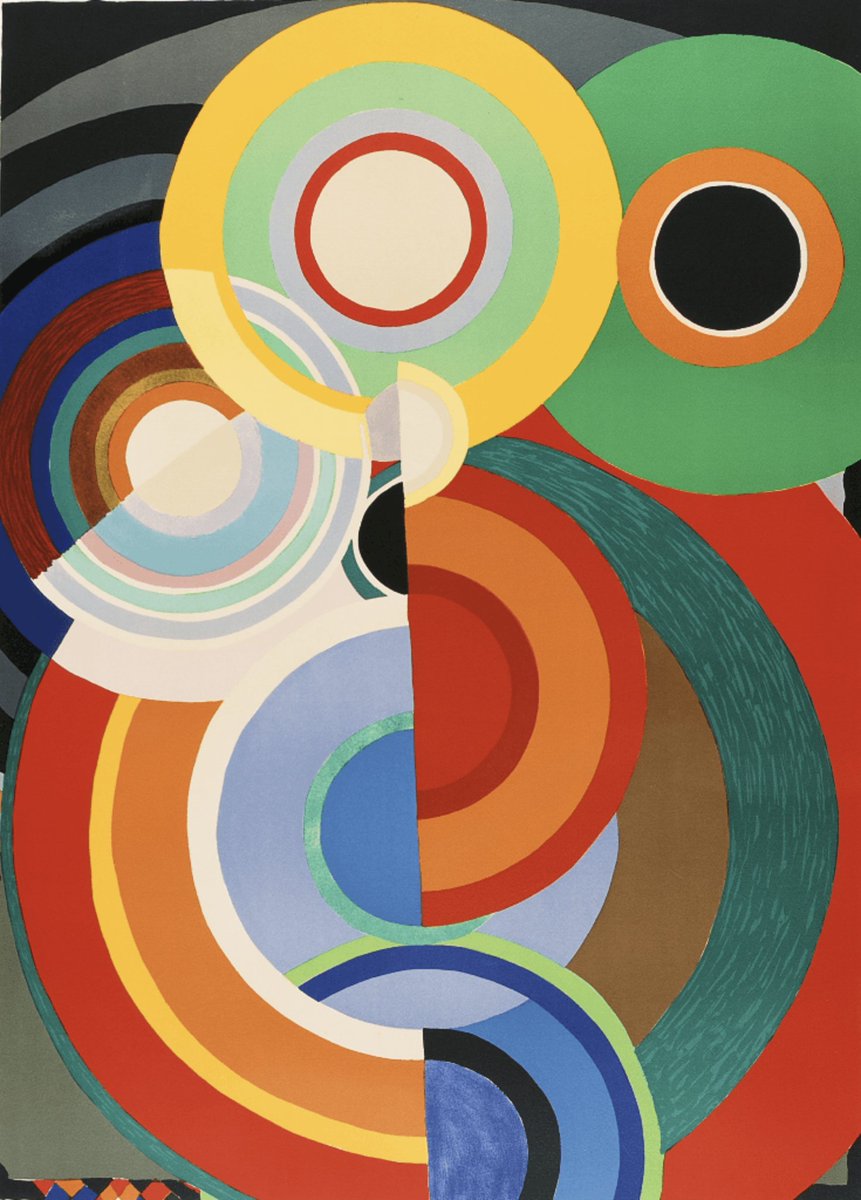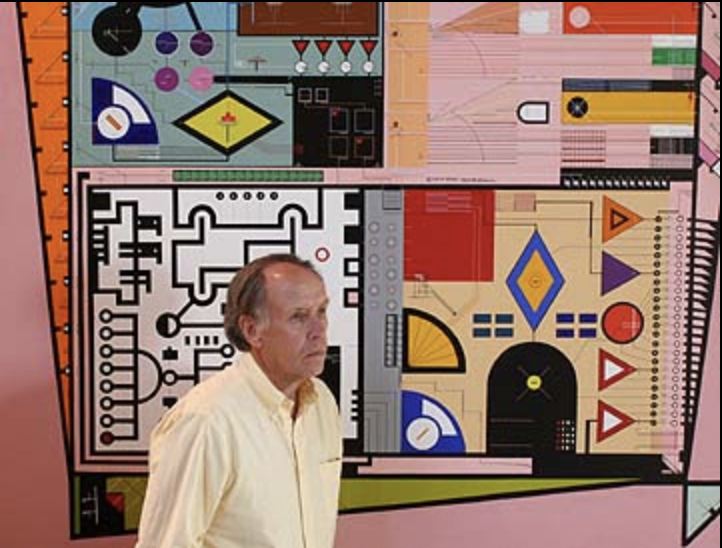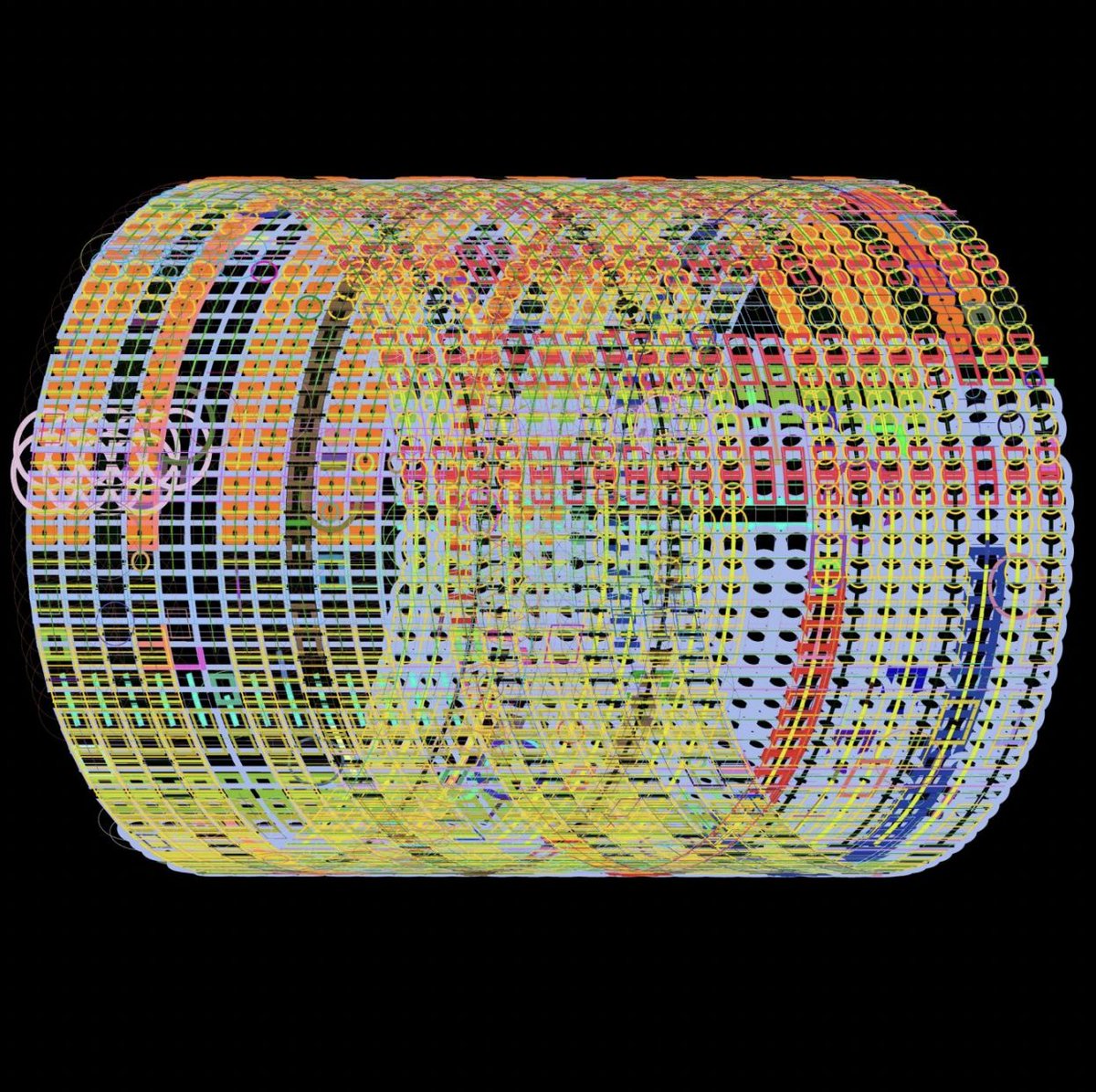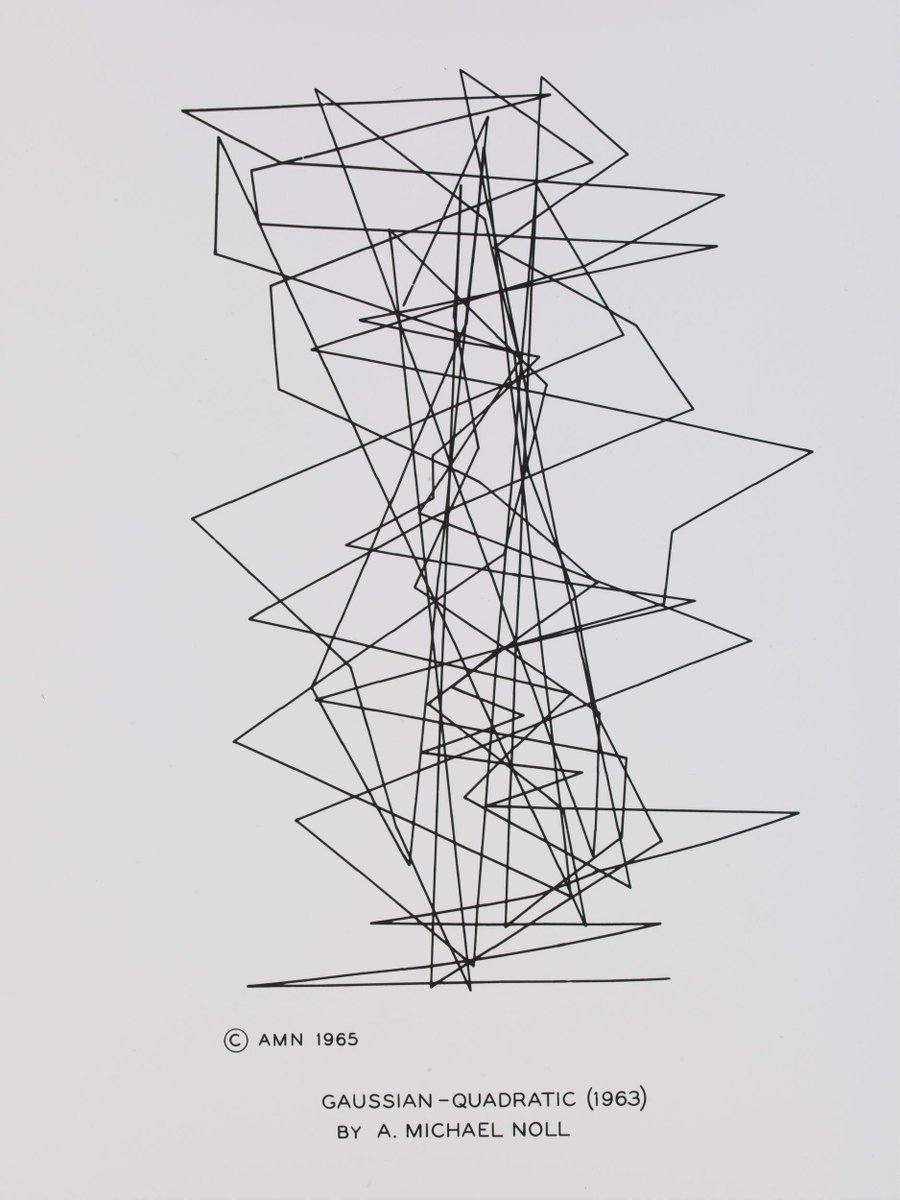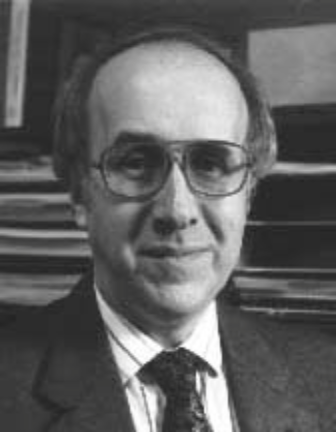
A quick thread about Robert Mallary, the artist who wrote with the help of his son an algorithm to create the very first computer-generated physical sculpture in 1968. Read on to discover more: 

Robert Mallary (1917 - 1997) was an American abstractionist and a true pioneer in computer generative art. Famous for his work with found objects and resin, he was well known for his "junk art," also sometimes referred to as "Neo-Dada."
While Ben Laposky was working on his epic collection called "Oscillons" in 1953, Robert Mallary released in 1951 his series called "Luminous Mobiles." As much as there's a resemblance between the two, it's essential to note that Mallary was not using only analog materials. 

From 1968 we can consider Robert Mallary as becoming a "computer artist" when his computer-generated sculpture using Fortran on Amherst's IBM 1130 and called "Quad 1" was displayed in the legendary exhibition called "Cybernetic Serendipity" in London. 

Georg Nees, started to work on his "computer sculptures" as early as 1965, but his work was only displayed in 1969 at the Nuremberg Biennale hence the assumption that Mallary was most likely the first to create a computer-generated sculpture.
Like François Morellet or Sol Lewitt, Robert Mallary had a systemic approach to his creative process. His approach was also unique as it was deeply rooted in Shannon's information theory. He described his practice as "transductive art" as it was based on systems of relationships. 

During his entire career, Mallary was always ahead of his time. He worked on a virtual reality system as early as 1992 with the 'Cave Automatic Virtual Environment' system developed in the laboratories of the University of Illinois.
One of my favorite quotes from Mallary is from 1968 when he declared "Sculpture has always reflected the technology of the time". If you think about it, 3D printing is indeed a good representation of the current state of our mainstream technological evolution. 

Beyond his immense artistic legacy, Mallary was also an astute theorist and a great teacher. He taught non-stop for more than 48 years and finished his career at the University of Massachusetts.
To illustrate his engagement with his students, when he saw their frustration because of hand-punched cards he built himself in 1978 a software libraries using Fortran so they could have an "easier" experience learning computer graphics (how lucky we are today with p5js).
Robert Mallary's artwork has been exhibited in some of the most prestigious museums in the world. His immense contribution is being slowly discovered, for example, "Quad III" was acquired by the Tate in 2019 

If you want to learn more about the artists mentioned in this thread:
Ben Laposky:
Georg Nees:
François Morellet:
Sol LeWitt
Ben Laposky:
https://twitter.com/Eko3316/status/1454217310789636100
Georg Nees:
https://twitter.com/Eko3316/status/1476502534919536641
François Morellet:
https://twitter.com/Eko3316/status/1517858458523115520?s=20&t=hfF0TV2qEYCbM8bbQAkoYg
Sol LeWitt
https://twitter.com/Eko3316/status/1494975659961106433
If you're curious about other pioneers of computer generative art you may find these threads interesting:
Joan Shogren:
Charles Csuri:
Attila Kovacs:
Joan Shogren:
https://twitter.com/Eko3316/status/1515274383245418496
Charles Csuri:
https://twitter.com/Eko3316/status/1504835903130423296
Attila Kovacs:
https://twitter.com/Eko3316/status/1496471400860852225
Aurélie Nemours:
Waldemar Cordeiro:
Frieder Nake:
Mark Wilson:
https://twitter.com/Eko3316/status/1490678493260259335
Waldemar Cordeiro:
https://twitter.com/Eko3316/status/1480520426862395395
Frieder Nake:
https://twitter.com/Eko3316/status/1479108641433145355
Mark Wilson:
https://twitter.com/Eko3316/status/1475445544826847235
Michael Noll:
Desmond Paul Henry:
Hiroshi Kawano:
https://twitter.com/Eko3316/status/1474059280764522504
Desmond Paul Henry:
https://twitter.com/Eko3316/status/1469972199943688195
Hiroshi Kawano:
https://twitter.com/Eko3316/status/1446471210292977669
I love computer generative art and as an artist I believe it's important to share the history of the pioneers of our movement. They've been through the hardships of radical innovation so we can have a much easier time right now. I hope you enjoyed these threads!
• • •
Missing some Tweet in this thread? You can try to
force a refresh


